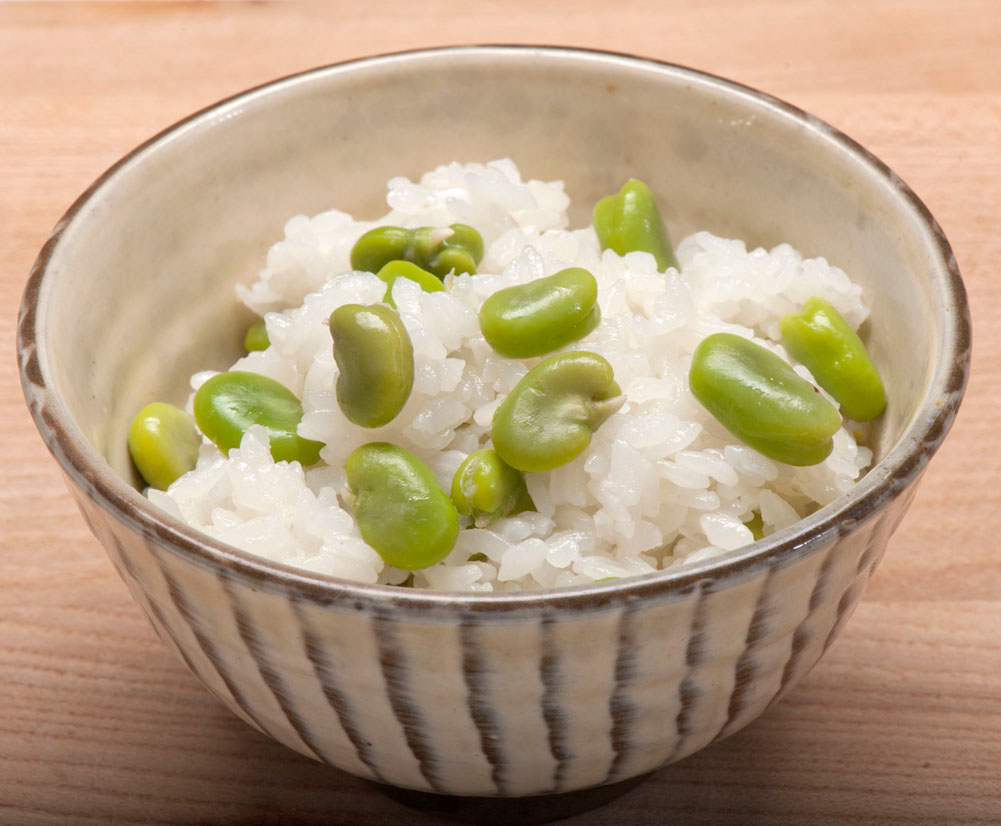Throughout most of Japan, June is the rainy season. While all that rainfall is great for rice paddies so that we can have delicious new harvest rice in the fall, it makes it a rather dull month for seasonal produce: The summer's bounty of cucumbers, eggplants and so on comes a bit later. What are in season, though, are the cheerfully green and plump legumes vicia faba, called fava or broad beans in English and soramame in Japanese.
Fava beans are thought to be among the earliest cultivated vegetables: They most likely originated in the Mediterranean region or Asia Minor around 6000 B.C. They entered Japan around the eighth century and have been a favorite ever since, a welcome sign of late spring and early summer, since unlike many other vegetables they can't be grown easily year-round. Soramame, the most commonly used Japanese name, means "sky bean"; they get this optimistic name because the pods can sometimes grow pointing up to the sky. The "sora" part is usually written with the kanji for sky, but another kanji used is the one that means "silkworm cocoon," since the beans look a bit like round cocoons. They're also called natsumame (summer beans) and tenmame (heaven beans).
When you're buying fava beans in season, be sure to get ones still in their pods, since as soon as they're shelled they start to lose their flavor. Fava bean pods are very plump and cushioned, so you need to get at least 20 times the volume in pods of the amount of beans you want to end up with. Shelling the beans then taking off the tough outer skins is hard work, but well worth it.

















With your current subscription plan you can comment on stories. However, before writing your first comment, please create a display name in the Profile section of your subscriber account page.